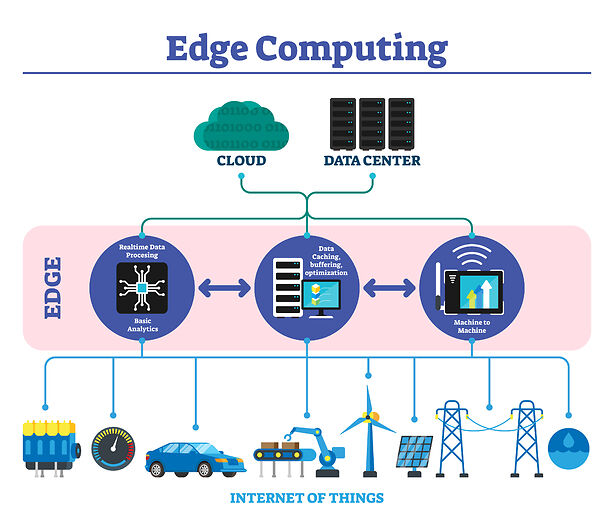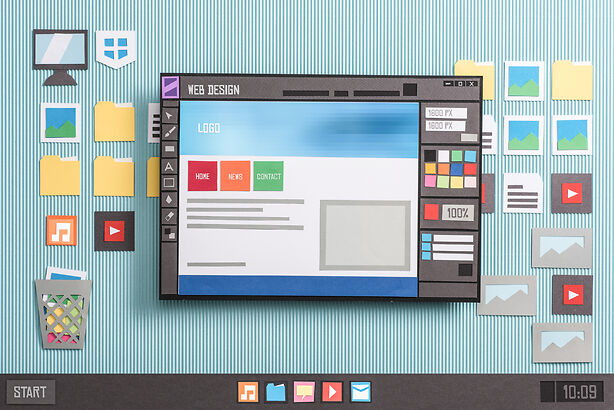
Top 10 Emerging Software Development Trends of 2022
Two Things are unstoppable: one is a natural calamity, and the other one is software evolution. Where the first has adverse effects, the latter one is all about the best in software. To cope with the new world paradigm, software is constantly being developed, and this has been going on for years, growing on and on. As we can see with our own eyes, no one stopped using just computers. After them, we had laptops and, of course, it didn’t stop there either. There were many more that came after that. Software is the backbone of the IT world and by applying new approaches in the pivotal areas along with overcoming the challenges, many software advancements came to light in 2022. Well, while some of them took birth out of technological needs, some were brought to the market because of societal needs.
In this article, we focused on the software developments that were trending and still are trending in 2022, which are as follows:
- Cloud Everywhere- Say no more on-premise maintenance
- IoT- The one-touch technology
- AI is still the big thing
- Blockchain- Financial services updated
- Low-code/No-code- The new era of coding
- Edge computing- Neck-to-neck network distribution
- Progressive web apps are instant but impactful
- Programming languages— A rise like never before
- Various Realities- A real-world Sci-fi movie
- Big data- Predictions benefit businesses
- Conclusion
Not to start on a bad note, but the whole COVID pandemic has helped people realise the importance of cloud services and it has bloomed since then. To meet the growing need for business availability, data recovery, and high accessibility, cloud computing has made its way from books to reality. This off-premise forerunner in technology has been offering solutions for storing information in the cloud, which reduces space, money, and risk. And with Corona on the edge, people have been looking for remote work, and in times like these, cloud data centres are experiencing a huge scale-up.
That’s not all; cloud services are being adopted by every industry, including government, startups, finance, healthcare, education, and agriculture. With the flexibility, scalability, and productivity cloud services provide, it is estimated that nearly 70% of companies will be shifting to cloud services. With that, not just cloud biggies like Amazon, Google, and Microsoft, but other companies are experiencing the fruits of this evolution, and this is going to continue for so long. That is because the cloud is not just used for storage purposes; rather, this software is also being used to build apps, manage teams and communicate. This well-known software is expected to have a market worth $150 billion by 2022.
The craze for remote control things or things that can be controlled remotely isn’t new to us. Everyone prefers digital watches over analog, patients are being treated with automated surgeries, and we feel comfortable with airdrops rather than wired earphones. So, this recent shift in human interest and requirements is the reason for IoT’s emergence unexpectedly. IoT is not rocket science; it’s simple. It uses the internet to operate things. The analysis says by 2025 we can see a perfect 30.9 billion units of IoT devices, which are going to lead to a new automated world.
IoT is going to lead the digital transformation of the world because of its security, quick delivery of solutions, and perfect user interface. When this is happening, the IoT is not just profoundly making its way into human lives; rather, it is helping us evolve on a whole new level. In addition, imagine integrating IoT with other technologies. It would be like bringing all the superheroes of Marvel and DC together. By which we mean, the impact this integration is going to have been impeccable and this will help many organisations evolve technologically by bringing them the recognition they deserve. This is because IoT is not just IoT. It can be about the cloud or it can help with 5G, edge computing, AI, and many more.
“AI for all” has been the most trending slogan in the software world for a long time. AI is a complex technology, but it has been one of the greatest inventions of mankind. Several technologies will be used to improve and transform operations, allowing machines to sense, learn, understand, and act to augment human capabilities. This hottest technology has its applications growing at a rapid pace over the next few years. We are not saying this. Look at the stats for yourself. In 2022, 86% of CEOs made AI a mainstream technology in their office, making AI not just a trending technology but becoming a dominant one over the years of advancement it has seen.
AI has made its way into healthcare, banking, gaming, e-commerce, and real estate, and it has only grown since then. With AI acting as a supporting tool for mankind, the revenue growth of AI has been unstoppable and also its sub-branches like Deep Learning, Neural Networks, Cognitive Computing, Natural Language Processing, and Computer Vision are experiencing a sweeping change in revenue. Working together, AI and business will have a long run as the innovations keep going on and there seems to be no end to it. So, if you want to get a piece of the action, AI is the way to go.
Blockchain has been one of the most talked-about technologies in the software industry these days. This technology has had a significant impact not only on cryptocurrency, but also on many other industries. This technology is all about safe transactions that are happening over the internet. With the number of transactions increasing and also the number of hackers, the need for the blockchain has been increasing intensively. Blockchain technology is secure, decentralised, transparent, simplified, and immutable. These are its biggest strengths.
Blockchain has the potential to change the whole industry of finance, but now it has changed its direction and now blockchain is being applied in banking, finance, supply chain management, media, publishing, and healthcare software development with the advancements that have been happening. The forecast says that blockchain will reach a market value of $16 billion by 2023.
Low code or no code, also known as LCNC, is something IT developers would laugh at when it was proposed, but the same concept is now becoming a threat to their jobs. This is because when it comes to software development, everything is about speed. One one-second delay and you will be out of competition. Assisting businesses of all scales, LCNC is acknowledging their need for digital solutions. Providing Continuous Integration and Deployment along with Flexibility and Resilience. This type of software enables individuals to create applications with little knowledge of the subject. This initiative has been gaining momentum with lots of innovations, mergers, and acquisitions on its side.
This will enable businesses to create solutions and deliver them faster than usual. And to adapt to this technology, you don’t need any rocket science or pages and pages of code. All you need is a simple understanding of code, and the tools that provide LCNC will take care of what needs to be done. With every industry going digital in the 21st century, LCNC will be the best technology for your enterprise.
We have already seen the rise of cloud computing in 2022, but that was not the only cloud computing that has interested enterprises. Edge computing, which is related to cloud computing, also caught the eye of investors in the year 2022. This is not just us, but the stats also say that over 57% of companies are going to have edge computing on their roadmap along with 75%, which means three-quarters of industries will be using edge computing to process their data by the end of 2025. Edge computing may be related to cloud computing, but it is the opposite of it. While the public cloud has a centralised data centre, edge computing acquires very low latency (5 to 20 ms.), high bandwidth, regulatory reasons, real-time use cases, smart and powerful end-user devices, etc.
Edge computing Solving the problem of the public cloud by moving data to the edge of the local network has been catching the attention of many industries like healthcare, gaming, transportation, private companies, and many more. With this happening, the competition between the cloud and edge industries is going to be a tough one because whoever invests first in the trending one will benefit the most. So, it’s better to be fast than sorry.
What is the one thing everyone loves about instant noodles? Taste? Of course, but there is another major thing that you missed, which is speed. Now imagine being able to use an app as quickly as making instant noodles instead of waiting for minutes or hours to download it. Why wouldn’t that interest people? And then happened the birth of Progressive Web Apps, or PWA in short. These PWA’s are an integration of the benefits of both web applications and mobile apps. With PWA, users can work on apps with the help of updated browsers and take full advantage of the website with just one click. And if you want to skip to the good part, users can also work offline with no need for installation.
Maybe this is why PWAs have 36% higher conversion rates than native apps. I mean, why wouldn’t it be because of the great features it offers? These multi-pages and single-page applications are faster and lighter to download and provide users with an app-like experience along with an auto-update. These are cost-effective, easy to maintain, and time-saving, which is why Google and Microsoft have heavily invested in this technology, which is also a sign that they are the future of the app industry.
Programming languages— A rise like never before
The programming language landscape in recent years has been going through major changes. Programming languages that are easy to learn and use are becoming more popular, and this is hugely impacting the ranking of programming languages in 2022 and beyond. Here are some languages which you must know about:
Python
Python is the most popular programming language. Python can handle data science, web development, mobile development, and enterprise projects. Python has attracted a lot of teen interest because it is easier to learn than more complex languages. This is why the developments in Python have been unstoppable. Its ability to allow for conducting complex mathematical operations, data analysis, machine learning, and neural network building is what sets Python apart. Maybe for these reasons, a survey held by Stack Overflow shows that Python is the most wanted language to learn among developers. So, if you are thinking about app and web development, make sure you grab a bunch of Python developers.
JavaScript
JavaScript remains the undisputed number one language, especially for web development enthusiasts, and is increasingly popular in other domains, including backend development. The growth dynamics of JS are astounding. If you are looking into the job listings, more than 47.6% of the listings require JavaScript as a primary skill. Well, this assures that JavaScript developers will increase and so will its users. All thanks to AngularJS’s introduction in 2014, JavaScript is managing to sustain many backend operations simultaneously. JavaScript frameworks will be the next big thing in web development and are going to become even more apparent as this year goes on.
Java
Java, being an ancient language, never misses a chance to surprise us with new features and old commitments. Java provides high stability and reliability, automatic memory allocation, high-level security, Android App Development, and a diverse set of open-source libraries. Apart from these features, Java still remains legendary because of its write once and execute many times (WORA) and the most important functionality (JVM). As a result, prominent programming languages such as Kotlin and Groovy are also using the JVM as their runtime. This is the reason that even though many languages have emerged since Java, leading service providers like Google, Microsoft, and Amazon still have Java as their number one choice in enterprise software development. Due to its top rank in software development and no competitors, Java is one of the biggest programming languages investors and startups should look out for.
Modern languages
2022 was not about the existing niche languages, but there are a few modern and newer development languages that surprised us. Languages like Rust, Go, Typescript, and Kotlin focus on delivering fast performance, expressiveness, multi-threaded processing, null safety, cross-device optimization, type inference, seamless deployment, and conciseness. These languages are free of past baggage and are also poised to meet the demands of today’s developers. Backed by the tech giants like Google and Microsoft, which have been heavily investing in the growth of these projects over the last few years, these languages are surely going to make the future of software development brighter and bigger.
Augmented Reality
AR, or augmented reality, is something that you use every day. Yes, you heard it right, every day. This is because your mobile phone is one of them. Well, if you want something sophisticated, then the Avatar movie is a good example. Nothing about that movie was real; everything was the magic of a green screen and computer graphics. This phenomenon experienced unprecedented growth in the year 2022. One of the reasons is the heavy investment of big savvy companies like Amazon, Apple, Facebook, Microsoft, Google, and others in the craze this technology has gained over the years. Every sector, from marketing, education, medical, e-commerce, and GPS tracking, has eyes for this marvelous technology that is going to take us into a new realm of reality and which is likely to have a perfect number of consumers that can make any business hit the stock board.
Virtual Reality
Imagine experiencing the beauty and essence of scenery just by sitting at home without the need to actually go there. Well, that is what VR, or virtual reality, does. If you are a gamer, you must know about this. And with the gaming and video industry booming, VR is never leaving us. This is one of the technologies that is going to be unstoppable once it reaches its full potential because not just for gaming, VR can be implemented in everything and everywhere, and this will be one of the greatest human inventions and also an addiction at the same time. This exponential growth of VR will make over 58.9 million people use VR for everything. With VR, your ideas don’t have to just stay as ideas; rather, they can be turned into a vision and then a profitable business, which will be a win-win situation for you and your users. Also, I should say VR can be a magic ball if it is integrated with AI or other trending technologies because that would make the world turn into a sci-fi movie.
Mixed Reality
What happens when you mix two explosives that have the capacity to destroy anything? Well, that would create something that could destroy the whole world. Similarly, mixed reality is a combination of the two best elements of the real world, which is a combination of virtual and augmented reality. But this does the opposite. It is going to save the world. With that being said, MR is going to unlock new potential in the world of reality. Also, 90% of companies have confirmed that they are already experimenting with MR in some way or another. The wave of mixed reality hit us at the right time because of the digital transformation that has been going on. MR will be the perfect one to pick up. MR is also known as hybrid reality as it replicates the benefits of AR and VR, and that makes it unbeatable. So, MR is going to change the way we live if taken in the right direction.
While we are talking about technologies that started repeating benefits in 2022, big data isn’t something that came into existence in this era, rather it has been here for a very long time, but it has started gaining more and more attention in recent years. This attention is not going anywhere; rather, it is going to be increased in the upcoming years. This is because every company is thriving on data these days. With an increasing number of companies and start-ups, every company is experiencing a good shift in customer numbers, which is why each company is maintaining big data analytics to understand the large volume of data, which will turn the data collected into useful insights that can help them frame profitable strategies.
For instance, if a coffee shop has introduced a new flavor to its menu, how will they know if this flavour is benefiting them or losing customer loyalty? This is where big data will analyse what its customers want and help the shop build credibility based on using big data. According to the expert’s prediction, by the end of 2022, the global Big Data market will reach $70 billion and $250 billion by 2025. So, it is only a matter of time before you start using it in your business routine because it may become an integral part of modern business processes soon. But security also plays a crucial role in big data because if customers can’t trust your data with you, you will not just be losing customers but also your brand image. So, with big data, you can build the best empire for your company because data is going to be everything in the next few years.
Bottom Line
With the technological advancements we have been experiencing, it can be a tough task to select the one that is going to choose the right one. Things that we thought would be just a part of movies or imaginations have been becoming reality, and technology has been experiencing a sudden shift in trends, some of which are yet to come into reality. This is why we have given you all the deets and stats on the technologies that can change your business graph and transform the world into a better place. So, choose yours wisely.





















